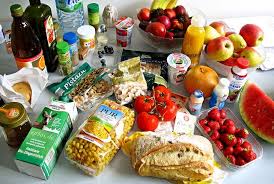Food Labels to Know
You have surely seen all kinds of terminology on food packaging, but if you feel like you need a degree in food safety to make sense of it you aren’t alone. In actuality, these dates aren’t indicators of food safety, but rather food quality. Confused yet? Here is a crash course in the numerous phrases the USDA uses to determine the best time frames for consumption.
It’s worth noting that quite a bit of planning goes into this nomenclature and even though there are some exceptions (more on that later) terms like “sell by” and “best by” are really just recommendations.
Sell By
This is used as an indicator to the store for how long to display the item, this is also used to help manage inventory in the store and in your own kitchen. Follow the basic “first in, first out” (FIFO) system to help you rotate your household inventory.
Best If Used By or Best If Used Before
This label is all about flavor and quality – a suggestion of peak time to enjoy that product. Using it after this date doesn’t mean you shouldn’t eat it after this date.
Use By
This again is a recommendation of when to use in order to experience peak quality. I repeat, this has nothing to do with the safety of the food. The only exception here would be infant formula. Federal laws do require that those products indicate a strict use-by date and parents should use this as a guide for when to use or discard the formula.
Freeze By
A slightly lesser-known label that appears on some meat products or refrigerated pastas like ravioli or tortellini. This date will guide consumers the latest date to transfer that food to the freezer to best maintain peak quality.
Expiration (EXP)
There are a few government entities at play here. Since the FDA keeps a close eye on meat, poultry and egg products (these foods are under their jurisdiction), manufacturers of these foods can voluntarily include expiration dates, but many do not. For cartons of eggs, you may see an EXP or “sell-by,” but this varies from state to state depending on their particular laws.
Waste Not?
These dating systems can be helpful to consumers, but there is also a downside. Many confused consumers think they are obligated to get rid of foods once those dates have passed, tossing tons of perfectly good food. According to the USDA, Americans are wasting 30 to 40 percent of the food supply and there’s a good chance misinterpretation of date labeling may be part of the problem.
How To Tell If Food Has Spoiled
Since date labels are more about quality than spoilage, it is really up to the consumer to make the call. What folks really need to look for is evidence that food has gone bad. The signs may vary depending on the food but possible indicators of spoilage include discoloration, unpleasant taste and odors, as well as swollen or dented cans for canned items. It is worth noting that according to the FDA, change in color for meat or poultry is not an indication that the product is spoiled. Furthermore, if the food has not reached its sell-by or use-by date, it can still be subject to spoilage. Bottom line, use your nose and when it doubt, throw it out.
Finally, Get A Lifeline
Excellent food safety resources for storing and preparing foods can be found FoodSafety.gov and EatRight.org. The USDA also offers the “AskKaren” web page at AskKaren.gov where consumers can get food safety questions answered 24 hours a day.
Dana Angelo White, MS, RD, ATC, is a registered dietitian, certified athletic trainer and owner of Dana White Nutrition, Inc., which specializes in culinary and sports nutrition. She is the author of four cookbooks First Bites: Superfoods for Babies and Toddlers, The Healthy Air Fryer Cookbook, The Healthy Instant Pot Cookbook and Healthy Quick and Easy Smoothies.
*This article was written and/or reviewed by an independent registered dietitian nutritionist.







More Stories
2023 Hats
50th Anniversary
Chinese Lunar New Year Jan. 22, 2023